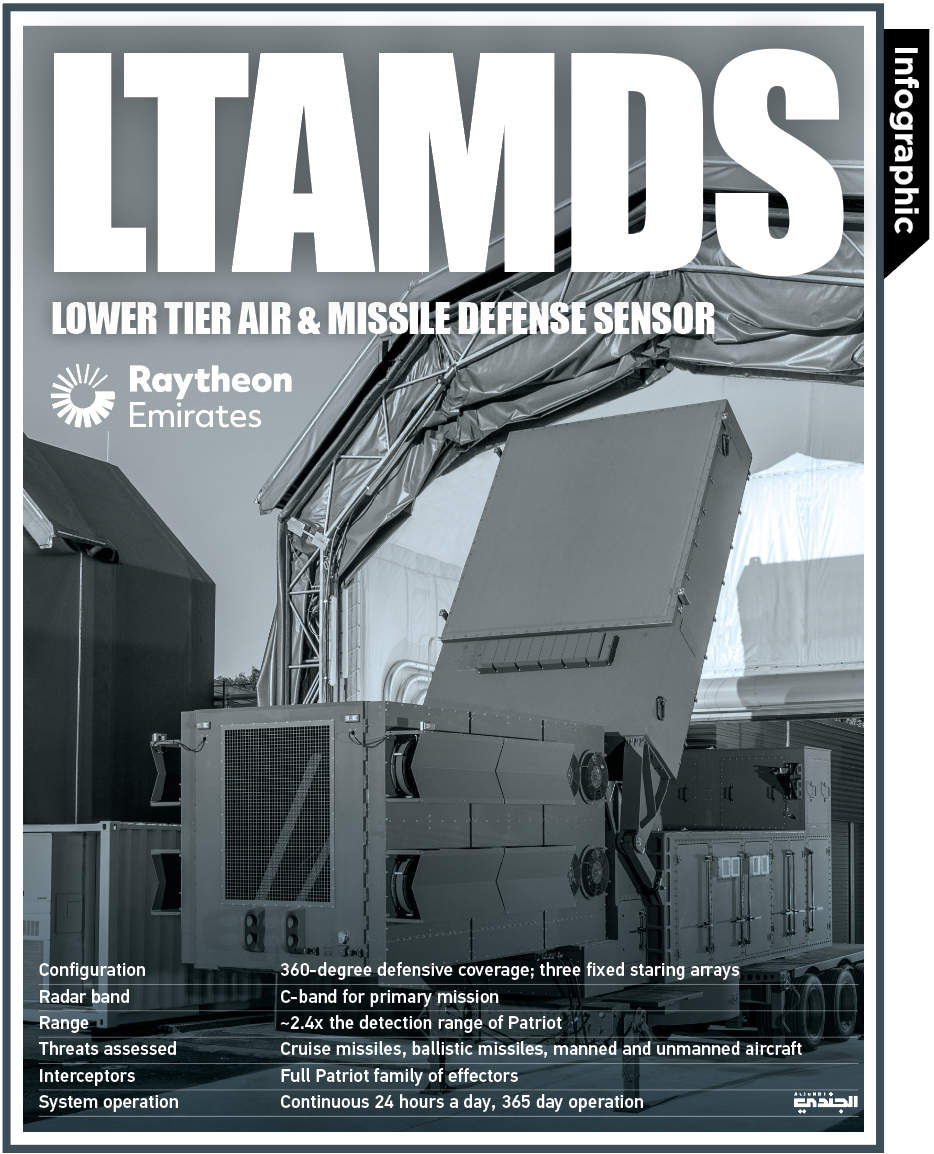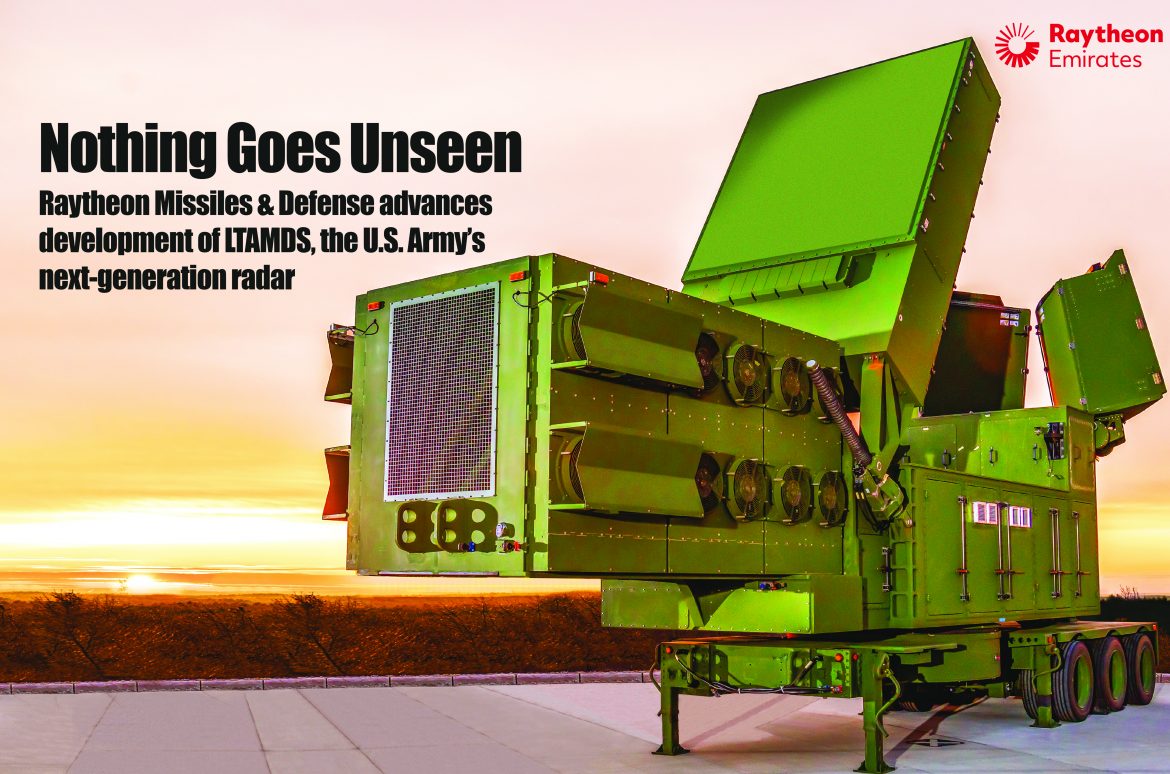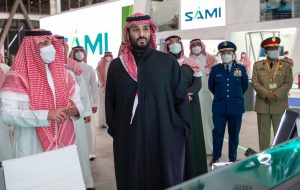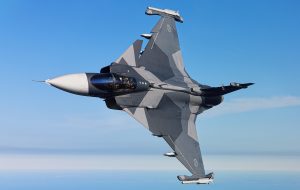Raytheon Missiles & Defense, a Raytheon Technologies subsidiary, recently gave a name to its family of advanced air and missile defense radars: a series of radars with enhanced sensor performance and reliability, improving defense capability against the proliferation and evolution of the advanced threats of today and tomorrow.
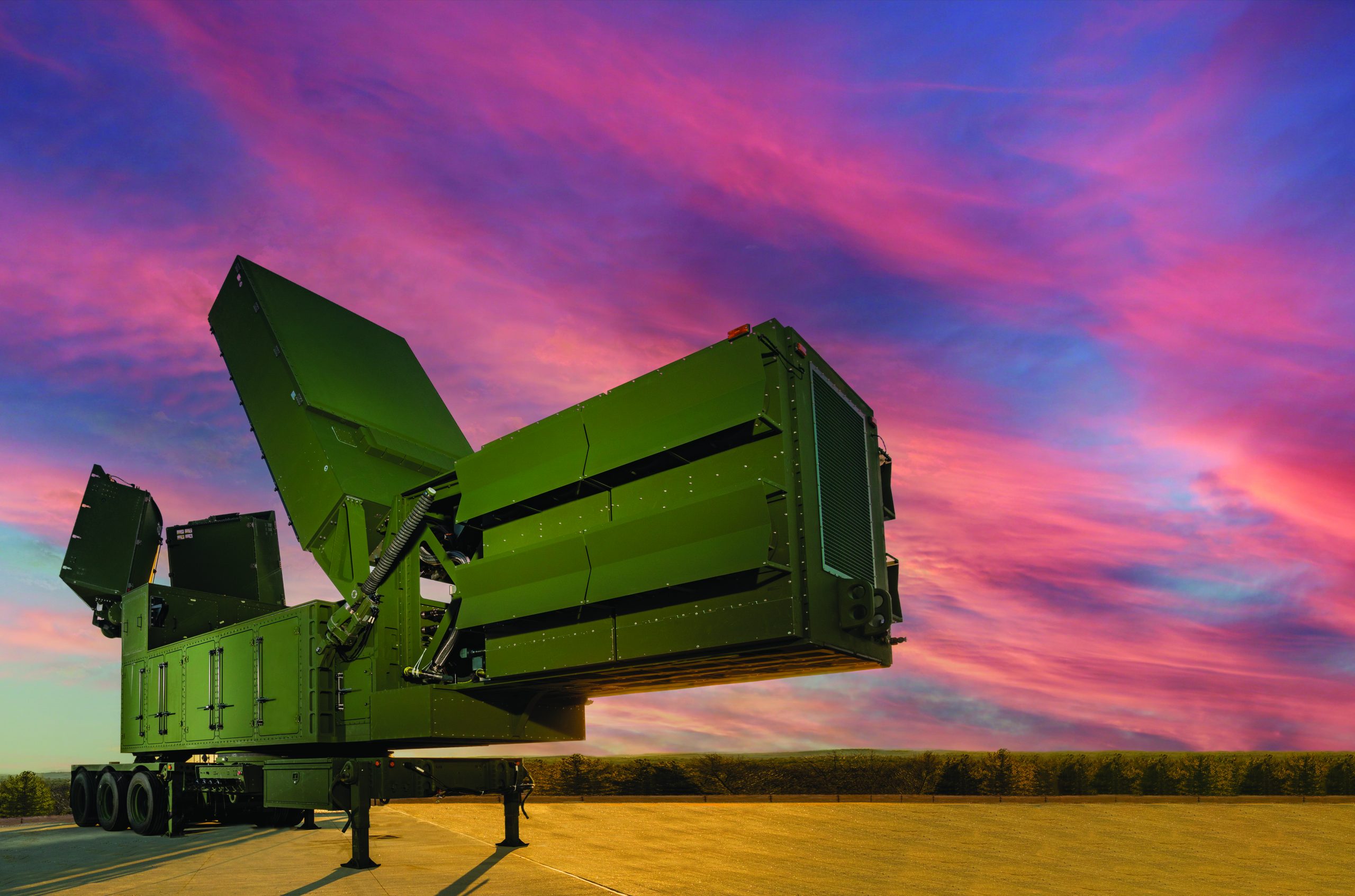
A family of radars this revolutionary deserves a name. Radars that turn power and performance into a decisive advantage. A guardian, a defender, a radar charged with scanning the skies for otherwise unseen threats at greater distances, at higher velocities, and from any direction.
Raytheon named this family of radars GhostEye®.
The radar that Raytheon Missiles & Defense is building for the U.S. Army is known as the Lower Tier Air and Missile Defense Sensor (LTAMDS) and is the first radar in the GhostEye family.
The second in the family, and leveraging commonality with the U.S. Army’s LTAMDS, Raytheon Missiles & Defense has separately, yet concurrently, developed GhostEye MR, a medium-range radar that maximizes the capabilities of the National Advanced Surface-to-Air Missile System, or NASAMS.
So, Raytheon’s new name, GhostEye, establishes the identity of a family of sensors, all-seeing radars, powered by Gallium Nitride, and able to detect otherwise unseen threats at greater distances, at higher velocities, and from any direction.
When the first Lower Tier Air and Missile Defense Sensors are delivered to the U.S. Army in 2022, they will be the latest generation air and missile defense radar, providing exceptional capability against proliferating and increasingly stressful threats, such as hypersonic missiles.
Detection from every angle
These radars provide 360-degree coverage and use active electronically scanned array, or AESA, and gallium nitride, or GaN. While GaN circuit material is used commercially in everything from LED lightbulbs to smartphones, Raytheon Missiles & Defense has a foundry in Massachusetts that produces GaN for military hardware.
The company has made significant investments over the past two decades in GaN as well as AESA technology and advanced manufacturing. GaN strengthens the radar signal and enhances its sensitivity for longer range, higher resolution and increased capacity.
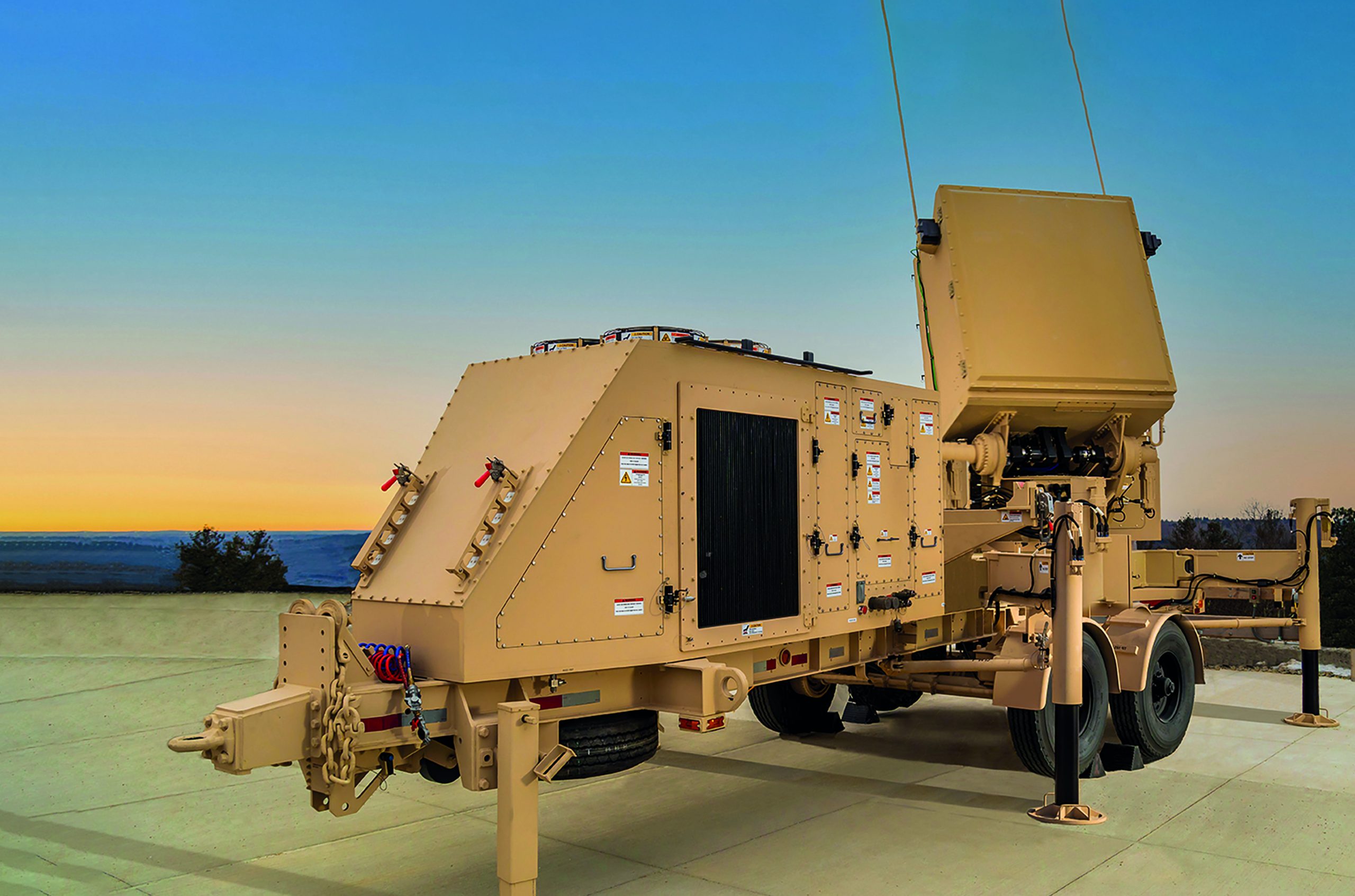
Advancing on track
The radar first came into focus when the U.S. Army put out a call for a new, advanced radar. In the summer of 2019, Raytheon Missiles & Defense produced the LTAMDS for the Army’s “Sense Off” competition where testing at the White Sands Missile Range in New Mexico included realistic scenarios against real targets and simulated threats.
The company’s innovative design exceeded requirements and was selected for the government contract in October of that same year. Less than five months after being awarded the contract, it had built the first radar antenna array and completed indoor testing of the first partially populated LTAMDS radar antenna. Within that first year, the radar was sensing.
“The Army set a rigorous and necessary schedule,” said Bill Patterson, LTAMDS program director. He added that “the timeline…is imperative because the threat is evolving and proliferating at a blistering pace. The Army asked for an advanced radar, and we’re showing them that the radar is on track and on time.”
Since the company was awarded the contract in October 2019, LTAMDS continues to advance through development, achieving all key milestones. The first radars are planned to be operational in the fourth quarter of 2022. That’s six operational radars in just three years from being awarded the contract.
End-user collaboration
Incorporating the input of personnel who will ultimately operate the radar has been a pivotal part of the defense sensor’s development process. To that end, Raytheon Missiles & Defense hosted Soldier Touchpoints, which are meetings at the company’s facilities and the test site where soldiers see and touch the radar, share feedback with its designers and engineers, and discuss development and features to ensure the system meets user expectations. There have been four such government-industry working groups since the first in September 2020.
”Soldier Touchpoint events provide Raytheon Missiles & Defense with an unprecedented opportunity for user involvement,” said Bob Kelley, the company’s U.S. Requirements and Capabilities Director. The meetings have given Army teams a chance to see the LTAMDS radar up close.
“Providing the warfighter’s early input has given us an unparalleled ability to deliver the right capability, at the right time, to the U.S. Army,” said Eric Maule, an associate director in U.S. Requirements and Capabilities for the company. And the Army is clearly invested in its success. At one Touchpoint in late 2020, it sent a team that included personnel from the Air and Missile Defense test detachment, Army Capability management, Army Futures Command, and the Program Executive Office Missiles and Space.
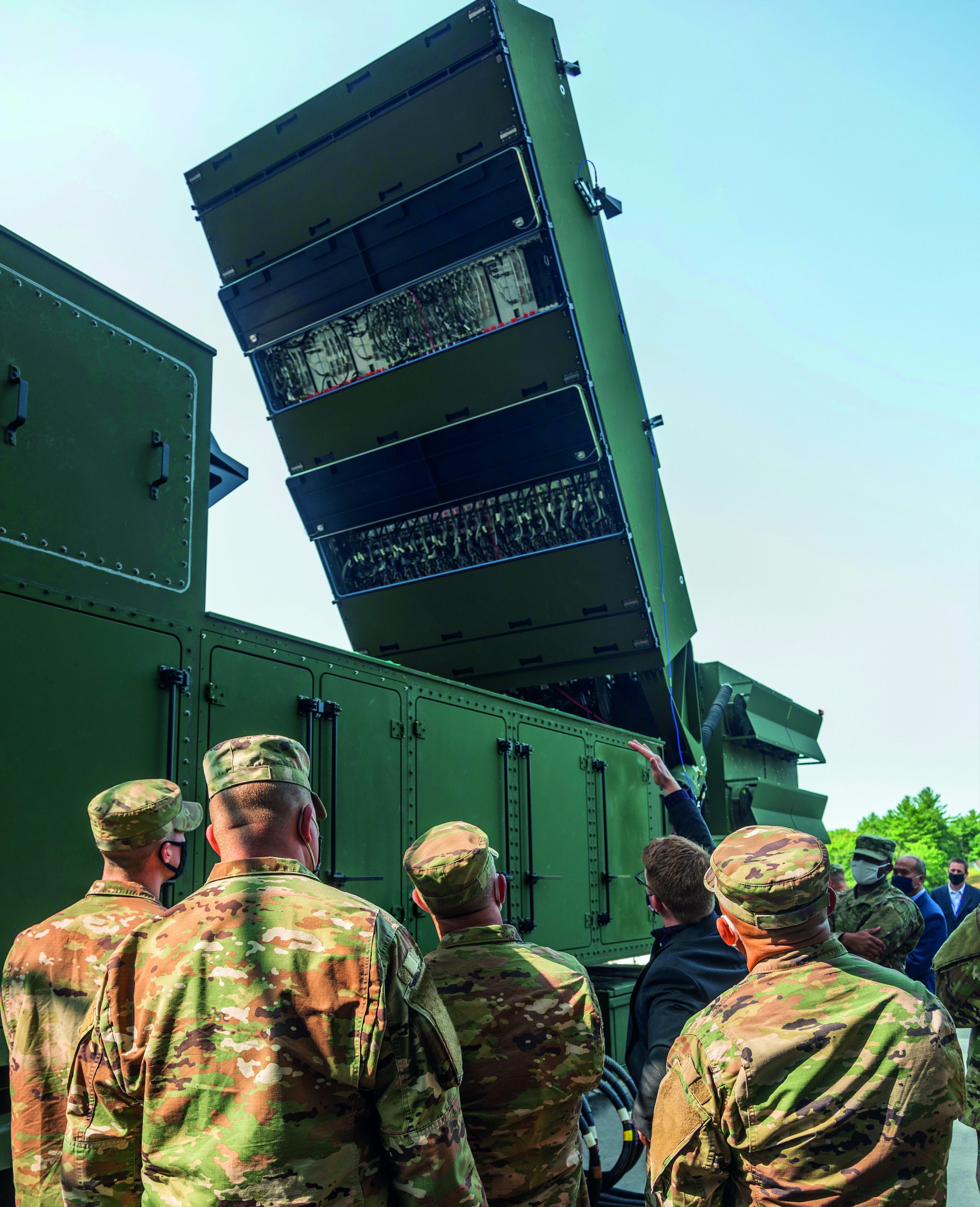
“This team was eager to roll up their sleeves and help clarify user concepts of operations and employment requirements,” Maule said. The mere sight of the radar kick-started discussions on a range of topics, including tactical deployment, equipment readiness, and emplacement in addition to the replacement and removal of parts, and whenever challenges arose, the U.S. Army members embedded in the technical and production teams were actively engaged.
This teamwork highlights a key factor in the radar’s success. “Raytheon Missiles & Defense thinks in collective terms, as in ‘we are in it together’ and ‘we’re doing it with the Army,” Kelley said. “It is a complete collaboration…hitting all the marks.”
In just over two years since contract award, LTAMDS moves to White Sands for testing
In April 2022, the first LTAMDS arrived at the U.S. Army’s White Sands Missile Range.
This is the first of six radars planned for delivery to the Army in 2022 and marks the beginning of a series of extensive tests to prove LTAMDS performance and functionality in an operational environment.
“Together with the Army, we set out to build a radar that could detect and defend against complex and evolving threats while reducing the workload on operators – and we’ve done it with LTAMDS,” said Tom Laliberty, president of Land Warfare & Air Defense, a Raytheon Missiles & Defense business unit.
“LTAMDS provides dramatically more performance against the range of threats, from manned and unmanned aircraft to cruise missiles and ballistic missiles. Air defense forces around the world are taking notice of LTAMDS, with over a dozen countries showing formal interest in acquiring the radar,” Laliberty added.
Also in May, Polish Minister of Defense, Mariusz Błaszczak, announced his plans for WISLA Phase 2 – signing a letter of request to include a 360-degree radar (LTAMDS).
“Global interest in LTAMDS has been strong and Poland has made a significant first step toward becoming one of the first international customers,” said Laliberty. “Not only will LTAMDS bring an exceptional capability to detect complex and evolving threats to our allied nations, but the expansion of our customer base will also offer the benefits of commonality and cost savings as well.”
The radar is the newest air and missile defense sensor for the U.S. Army, providing significantly more capacity and capability against the wide range of advancing threats facing air defenders around the world.
